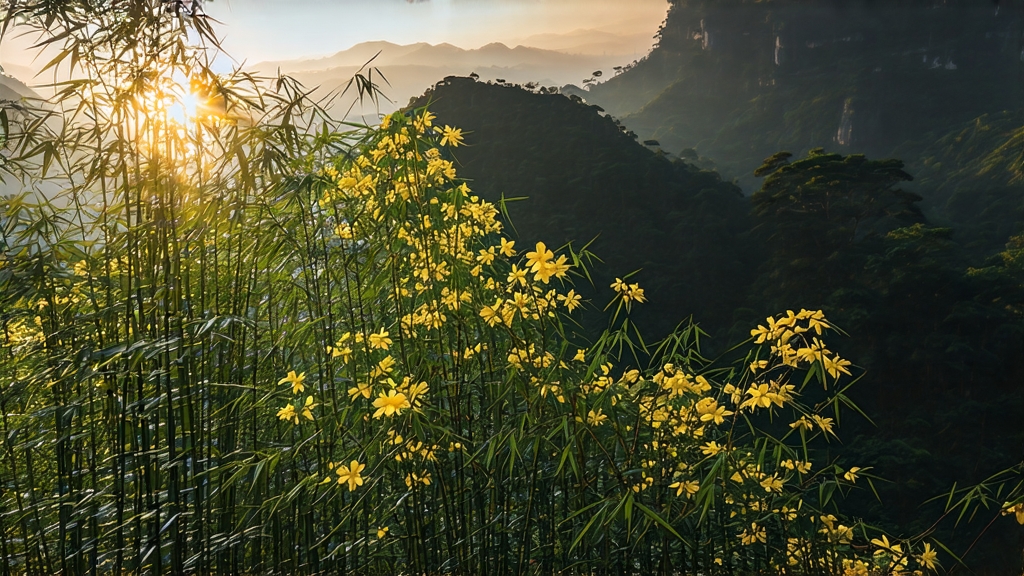
Tucked high above the clouds on the northern rim of the Sichuan Basin, Meng Ding Mountain has been whispering tea secrets for more than twelve centuries. Among the layered terraces of this Taoist sanctuary grows a cultivar so delicate that it is picked only when the spring dew still clings to its single bud and infant leaf—Meng Ding Huang Ya, literally “Meng Ding Yellow Bud.” To most Western drinkers yellow tea is still a rumor; to the court of Tang Xianzong it was already a mandated tribute, carried 1,400 li by fast horse so that the emperor could greet the equinox with its honeyed fragrance. Today the same tiny leaf continues to vanish inside China; less than 0.3 % of the national harvest earns the authentic name “yellow,” and Meng Ding Huang Ya accounts for a whisper of that whisper. Yet the style survives because its craft embodies the Chinese ideal of restraint: speed must yield to slowness, oxidation must be coaxed but never commanded, and the leaf is finally persuaded to yellow itself from within.
History and legend intertwine on Meng Ding. The mountain’s fourteen peaks form a natural amphitheatre that catches humid monsoon air, creating shade and fog on 280 days each year. An early Tang dynasty monk, Gan Lu, is said to have planted the first seven bushes after returning from India with Buddhist sutras and a pocket of tea seed. Whether myth or memory, those bushes became the genetic mothers of the present-day “Meng Ding group” cultivars—small-leaf, slow-growing, and unusually high in the amino acid theanine. By Song times local magistrates had ring-fenced the highest 1,200 m as “ imperial garden,” and a stone stele from 1082 still warns commoners against illicit picking under pain of bamboo flogging. The Ming tax archives list 92 jin of “Meng Ding yellow tablet” delivered to the palace in 1391, priced higher than equal weights of silver. When the Qing court shifted its taste to fragrant green, yellow tea fell out of fashion; farmers on Meng Ding quietly folded the technique into green production, and the true yellowing step survived only in family memory. It was not until 1959 that a state-sponsored restoration team, guided by an 85-year-old master named Yang Ze-yu, re-created the full sequence from wither to sealed yellowing, rescuing the tea from extinction.
Meng Ding Huang Ya belongs to the “bud-yellow” sub-category of yellow tea, differentiated from larger-leaf styles such as Huo Shan Huang Da Cha. Picking standard is ruthless: one bud, or at most one bud and one unfolded leaf, taken before Qingming when the bud still hides beneath a ruby-coloured scale. A skilled picker can finish only 500 g of fresh material in a dawn shift; 45,000 buds are required for 500 g of finished tea. Because the mountain enjoys a unique mid-level humid cloud belt, the buds accumulate soluble sugars while remaining low in bitter catechins, giving later infusions a natural rock-candy sweetness unseen in plains teas.
The crafting choreography begins the moment baskets descend to the village court. First spread—called “shaking green” though no oxidation is intended—lasts 90 minutes under 28 °C; the leaf loses about 8 % moisture and its grassy edge. The first firing, shaqing, is done in bamboo-roasters heated to 140 °C. A master roaster tosses the buds for exactly 3.5 minutes, using wrist flicks that imitate calligraphy strokes; the leaf must be hot enough to kill green enzymes yet cool enough to keep the bud intact. Immediately after, while still above 50 °C, the tea is wrapped in thick yellow cotton cloth and placed into the “men huang,” the sealed yellowing chamber. Here the magic unfolds: over 48–72 hours the leaf re-absorbs its own moisture, undergoing non-enzymatic browning that turns chlorophyll into pheophytin and converts protein-bound amino acids into volatile aldehydes. The bundle is opened every eight hours to release trapped carbon dioxide, then re-wrapped; temperature and humidity are never measured with instruments, only judged by the scent drifting from the cloth—first bean sprout, then fresh corn, finally roasted chestnut. When the master detects the chestnut note he knows the yellowing is complete. A second low-temperature firing at 80 °C for 20 minutes sets the flavor, and the tea rests for three days before a final charcoal finish